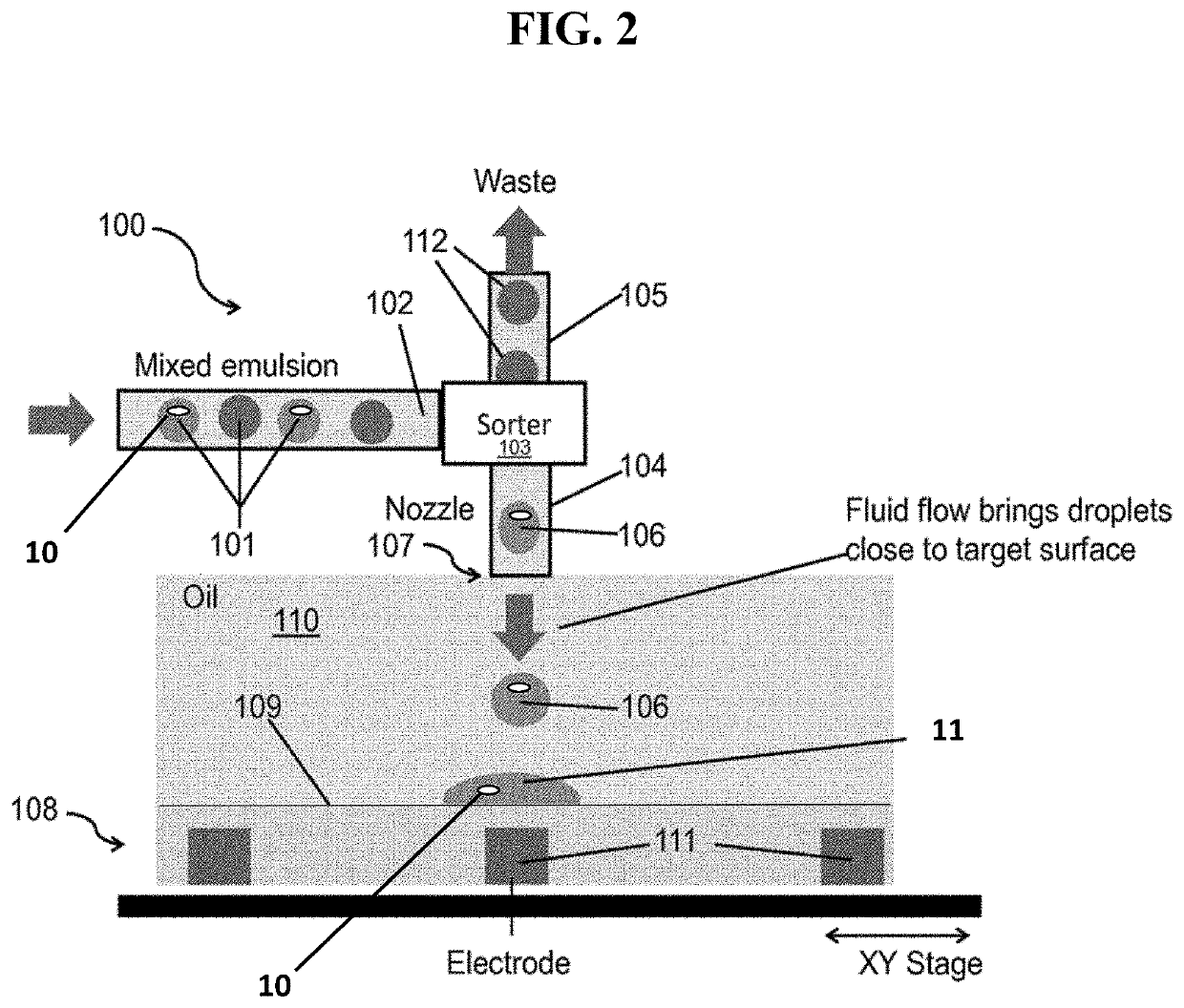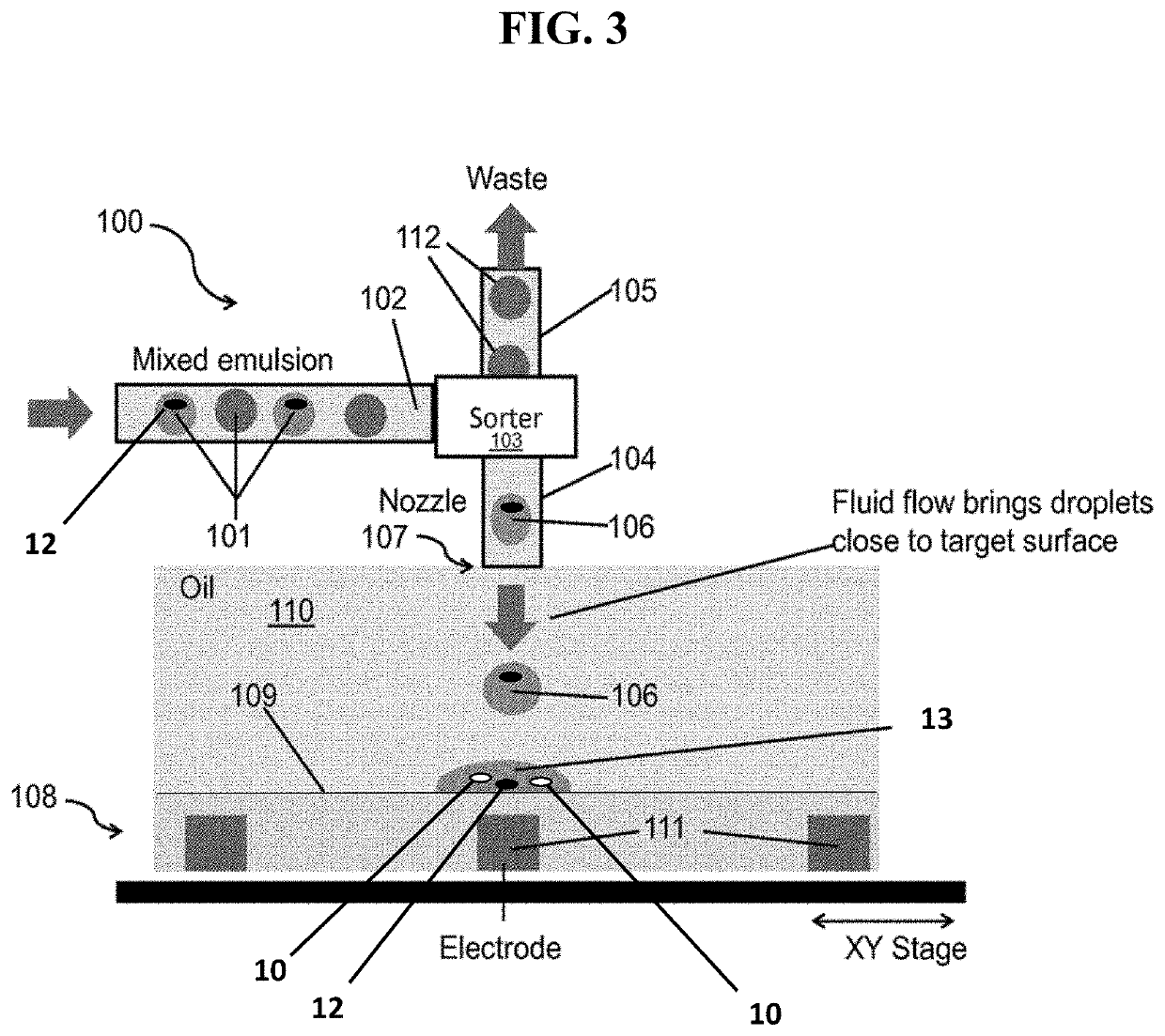Cell-cell interaction analysis via droplet microfluidics
a droplet microfluidic and cell-cell interaction technology, applied in biochemistry apparatus and processes, laboratory glassware, instruments, etc., can solve the problems of liver toxicities, lack of consolidated information on druggable genomes, lack of high throughput technologies,
- Summary
- Abstract
- Description
- Claims
- Application Information
AI Technical Summary
Benefits of technology
Problems solved by technology
Method used
Image
Examples
Embodiment Construction
[0025]The present invention provides systems, kits, and methods for analyzing cell-cell interactions, such as transmembrane proteins binding to surface displayed variable regions, via discrete entity (e.g., droplet) microfluidics. In certain embodiments, a plurality of first discrete entities and a plurality of second discrete entities are merged on a substrate to generate a plurality of merged fixed entities (e.g., fixed via an electrical force), each of which contains one cell expressing a transmembrane (TM) protein and labeled clonal cells displaying a heterologous antibody variable region. In certain embodiments, any binding of the clonal cells to the TM expressing cell is detected in each merged fixed entity, and the clonal cells found to bind are treated in order to sequence the nucleic acid encoding the variable region.
[0026]In certain embodiments, Printed Droplet Microfluidics (PDM) technology is employed (e.g., as described in US Pat. Pub. 2018 / 0056288; Cole et al., PNAS, 2...
PUM
| Property | Measurement | Unit |
|---|---|---|
| volume | aaaaa | aaaaa |
| volume | aaaaa | aaaaa |
| diameter | aaaaa | aaaaa |
Abstract
Description
Claims
Application Information
 Login to View More
Login to View More - R&D Engineer
- R&D Manager
- IP Professional
- Industry Leading Data Capabilities
- Powerful AI technology
- Patent DNA Extraction
Browse by: Latest US Patents, China's latest patents, Technical Efficacy Thesaurus, Application Domain, Technology Topic, Popular Technical Reports.
© 2024 PatSnap. All rights reserved.Legal|Privacy policy|Modern Slavery Act Transparency Statement|Sitemap|About US| Contact US: help@patsnap.com










